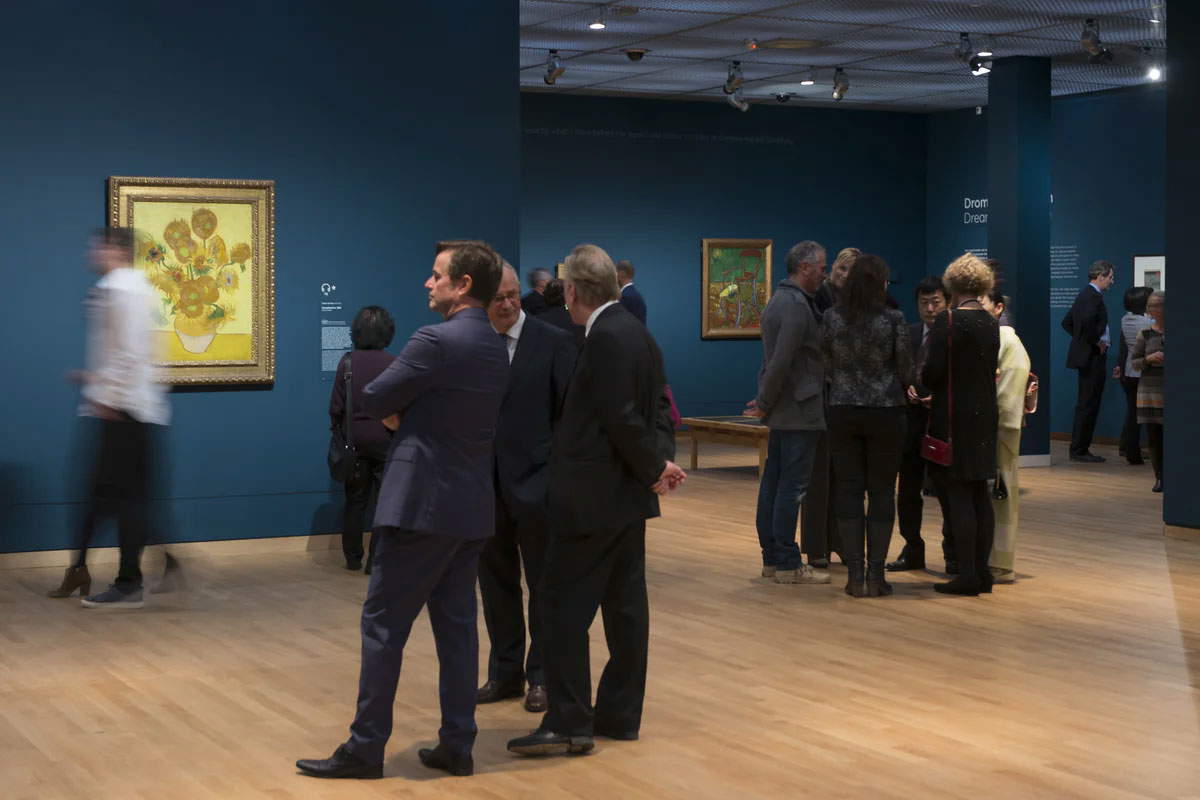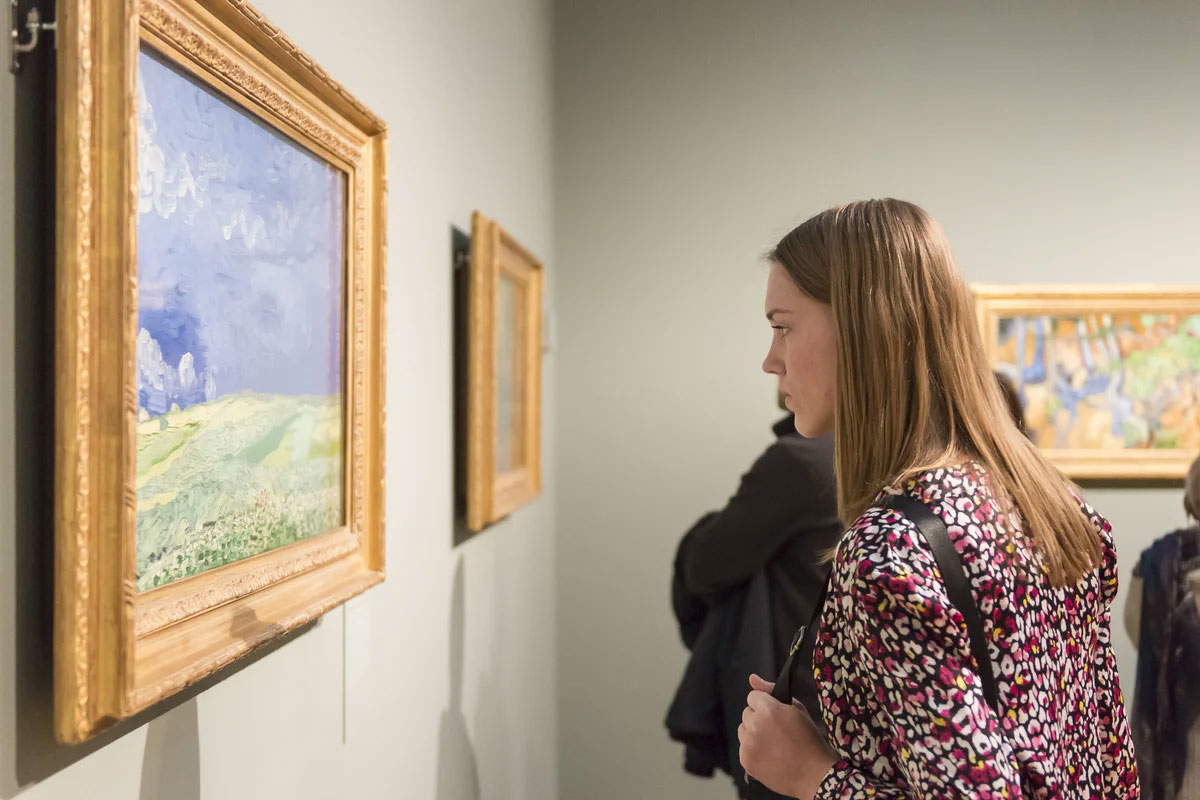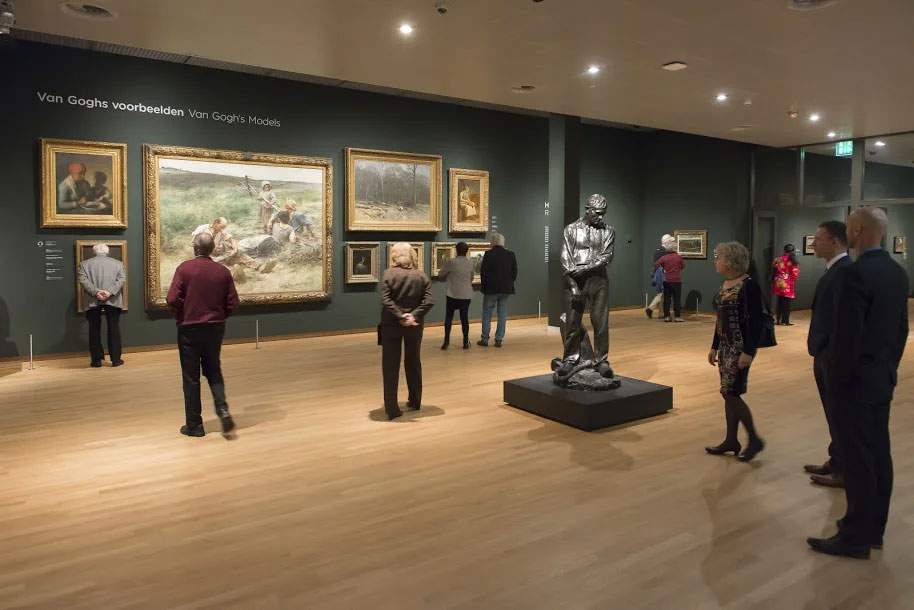The Van Gogh Museum in Amsterdam is perhaps the most famous museum in the world among those dedicated to a single artist, in this case the great Vincent van Gogh (Zundert, 1853 Auvers-sur-Oise, 1890). The museum’s origins can be traced directly to the artist’s life: after his death, in fact, his works were inherited by his brother Theo and his wife, Johanna van Gogh-Bonger, remaining in the family’s ownership. Theo and Johanna’s son and Vincent’s nephew, engineer Vincent Willem van Gogh, in turn inherited the collection in 1925, following the death of his mother Johanna. In 1930, Vincent Willem loaned some works to the Stedelijk Museum in Amsterdam, but as interest in his uncle’s work grew, and with it positive public response, the idea soon arose to dedicate a museum to Vincent.
Thus, Vincent Willem established the Vincent van Gogh Foundation in 1962, which, together with the State of the Netherlands, oversaw the construction of the building that now houses the Van Gogh Museum, designated as a place to house the family collection, with the goal of making it accessible to the public and to future generations. The building in which the museum is housed, on Paulus Pollerstraat, was designed by architect Gerrit Rietveld and opened in 1973, with the works that had meanwhile returned from loan to the Stedelijk Museum. The official opening, in the presence of Queen Juliana of the Netherlands, took place on June 2, 1973. Today the museum (which is among the most visited in the world, with more than 2 million people walking through its halls, 85 percent of them arriving from abroad: it is therefore important to book tickets in advance) houses an important collection of works by Van Gogh and his contemporary artists, displayed in the halls of the museum, which has since continued to expand: 1999 saw the construction of the wing reserved for temporary exhibitions, designed by Kisho Kurokawa, while the new entrance hall designed by Hans van Heeswijk opened on September 5, 2015.
 |
| The entrance hall of the museum. Photo by Jan Kees Steenman |
 |
| Interior of the museum. Photo by Jan Kees Steenman |
 |
| Interior of the museum. Photo by Jan Kees Steenman |
 |
| Interior of the museum. Photo by Jan Kees Steenman |
 |
| Interior of the museum. Photo by Jan Kees Steenman |
 |
| Vincent van Gogh, Almond Tree in Bloom (February 1890; oil on canvas, 73.3 x 92.4 cm; Amsterdam, Van Gogh Museum) |
The collection of works by Vincent van Gogh in the possession of the Van Gogh Museum is the world’s largest of works by the Dutch artist: there are 200 paintings, 500 drawings, and almost all of his letters. “In Rietveld’s building,” reads the official presentation, “one is immersed in Van Gogh’s world. Van Gogh lived life and the world intensely and wanted his art to portray the great themes of life, such as anxiety, suffering, love and hope.” To visit the Van Gogh Museum in Amsterdam is therefore to take a journey into the research of one of the most discussed, tormented, and beloved artists in art history. But that’s not all: the museum also aims to document the impact Van Gogh had on artists of later generations: the names of Maurice de Vlaminck and Kees van Dongen, among others, stand out, represented by a good number of works. And then again, French painting with the works of artists such as Claude Monet, Paul Gauguin, Camille Pissarro, Henri de Toulouse-Lautrec and Edgar Degas, and the conspicuous collection of Japanese prints that Van Gogh personally collected (and the reflections of this interest are moreover noticeable in his art).
There are many masterpieces that the museum houses: one can start with the Potato Eaters, the famous and humble portrait of the peasants of the Borinage, among whom Van Gogh spent one of the most interesting periods of his career. Then here is one of the versions of Sunflowers, a masterpiece of the Arles period (these magnificent flowers, in the artist’s own words, expressed the feeling of gratitude), to which Yellow House and Bedroom also belong (the latter became a kind of icon of Van Gogh’s art). By contrast, it dates from the extreme phase of the Zundert painter’s activity, the Almond Tree in Bloom, a work Vincent painted as a gift for his brother Theo and sister-in-law Johanna, who in 1890, the year the painting was made, had just given birth to their son Vincent Willem (“As we told you,” Theo would later write to Vincent, “we will name him after you, and I express the wish that he may be as determined and courageous as you.”) the almond tree, one of the first trees to bloom in spring, is a symbol of the birth of new life, and for these reasons the Almond Tree in Bloom is a work to which the Van Gogh family has always been very attached. And again, belonging to the latter part of his career is the Field of Grange with Flight of Crows, one of the most powerful and visionary images in Van Gogh’s art, subject to various interpretations.
The Van Gogh Museum is also an active research center on the art of Van Gogh and his era. The institute, in recent times, has initiated several important research projects: cataloguing of the collection, restoration of several paintings, studies on the artist’s painting techniques, and the Van Gogh Worldwide project, which is the largest digital database of works by the Dutch artist, carried out together with the Kröller Müller Museum in Otterlo and theRKD (the Dutch Institute of Art History). The Van Gogh Museum is also home to an extensive library with about 35,000 volumes and subscriptions to 40 journals (moreover, the museum library acquires about 1,000 new publications each year, all of which are documented on the museum’s official website).
Finally, the museum also devotes a great deal of attention to children, not only on site, but already from the website, with many activities reserved for the little ones, who can color Van Gogh works, play with puzzles, dioramas, and a board game, a kind of goose game all dedicated to Vincent van Gogh to learn while having fun. A museum, then, for everyone, an essential destination on a trip to Amsterdam, a must-visit to learn more about the art of one of the most revolutionary geniuses in the history of art in greater detail and more closely.
 |
| The Van Gogh Museum in Amsterdam, a museum entirely dedicated to the work of Vincent van Gogh |
Warning: the translation into English of the original Italian article was created using automatic tools. We undertake to review all articles, but we do not guarantee the total absence of inaccuracies in the translation due to the program. You can find the original by clicking on the ITA button. If you find any mistake,please contact us.